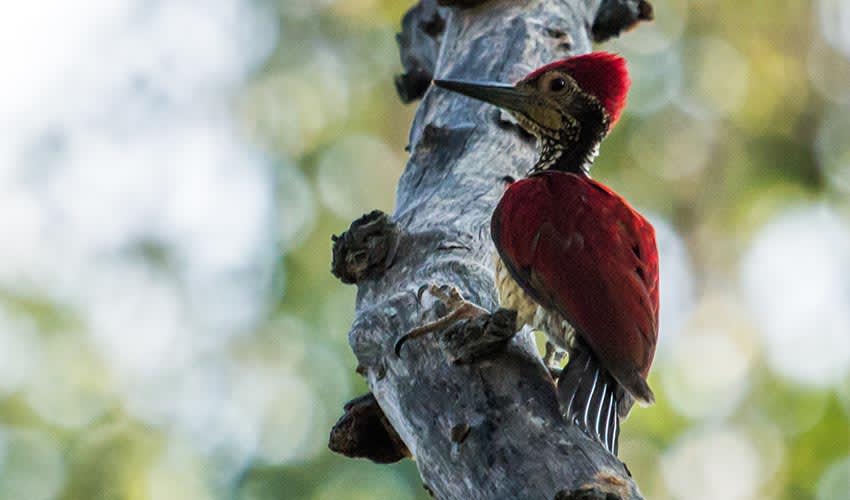Endemic to the northern and central islands, including Luzon, Mindoro, and Marinduque, it is found only in the Philippines, making it a true feathered treasure of the archipelago. What immediately sets it apart is its vivid plumage: a brilliant golden-yellow back that glows like sunlight against the green forest, a striking red crest that crowns its head, and bold black markings that make its colors stand out even more. The males are even flashier, with their entire crest blazing red, while females have more subdued tones but still carry that golden “flame” across their backs.
Like other flamebacks, the Luzon flameback is a master of woodpecker engineering. Its sharp, chisel-like bill is designed for hammering into tree trunks, both to uncover insects and to drum out its presence. The sound of its drumming—loud, rolling, and resonant—serves as both a territorial claim and a call to mates, echoing through the Philippine forests. To keep its balance, the bird uses its stiff tail feathers like a tripod, propping itself up as it works. Its zygodactyl feet (two toes pointing forward, two backward) allow it to cling firmly to vertical surfaces, turning tree trunks into highways and hunting grounds.
What makes the Luzon flameback especially fascinating is its role in the ecosystem. By chiseling into trees, it helps control insect populations, particularly wood-boring beetles and ants. It also creates nesting cavities in trees, which, after the woodpeckers move out, are often used by other animals like owls, hornbills, and small mammals. In this way, it acts as a kind of “forest architect,” shaping the homes of other creatures. But despite its usefulness, the Luzon flameback faces serious threats from deforestation and habitat loss, as forests across the Philippines shrink.
Distribution
 Philippines
PhilippinesAnything we've missed?
Help us improve this page by suggesting edits. Glory never dies!
Suggest an editGet to know me
Terrestrial / Aquatic
Altricial / Precocial
Polygamous / Monogamous
Dimorphic (size) / Monomorphic
Active: Diurnal / Nocturnal
Social behavior: Solitary / Pack / Herd
Diet: Carnivore / Herbivore / Omnivore / Piscivorous / Insectivore
Migratory: Yes / No
Domesticated: Yes / No
Dangerous: Yes / No




